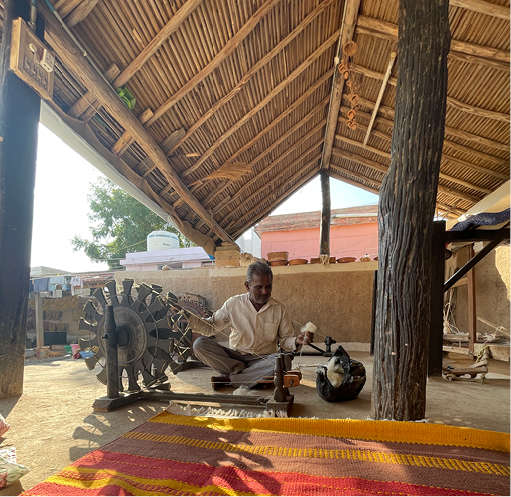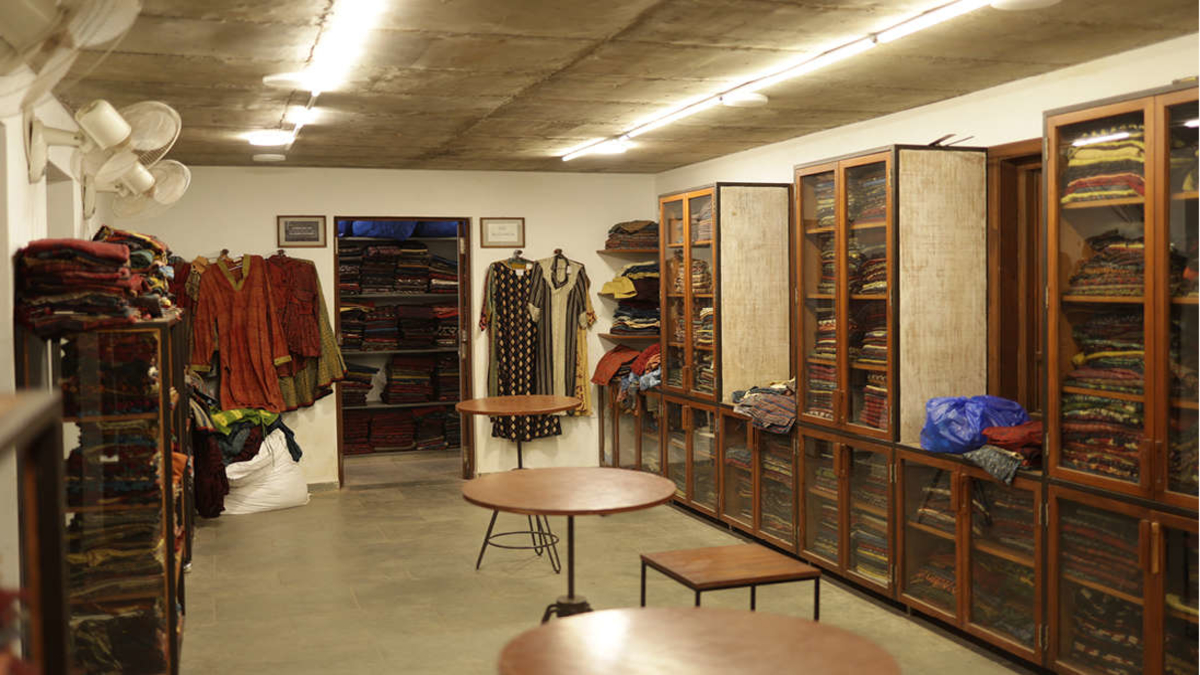T he pandemic of covid-19 has had a mixed impact across all industries. Fashion retail, traditional crafts, and the creative manufacturing and handmade (CMH) sector, as well as their businesses, come to a halt at this period. Lockdowns and travel restrictions that have lasted months have brought all social and commercial endeavours to a standstill overnight. During this period, traditional and handcrafted craftsmen and craft businesses, which account for the country’s second-largest source of employment after agriculture, suffered severely. The artists that make up a large portion of the crafts and artworks industry are among the most vulnerable workers on the planet. Inventory backlogs, cancelled orders, and supply chain disruption has sped up the art and their companies.
The crafts and artworks industry, like many other consumer goods market categories heavily damaged by the epidemic, has a very strong long-term development forecast. According to a recent research, the worldwide CMH sector generated more than $500 billion in yearly sales last year and is expected to rise by 20% each year to $1 trillion by 2024. Many local retail purchasers still buy handcrafted items from assembly-line companies, even though the industry is dominated by a scattered workforce of women, youth, and rural residents. Handmade and traditional craft is already the world’s second-largest job, but it has long been underserved due to a lack of investment, digitalization, business finance, and access to global markets.

As we emerge from the pandemic, it’s time to rethink handmade and traditional craft business models so that supply chains are more robust, growth is more inclusive, and the artists who create these traditional, handcrafted, and often sustainable items are better compensated. Many local artists and employees took advantage of the lockdown time to redefine themselves online, enlisting the support of their families’ younger generations to sell their wares on social media sites. Much contemporary technology and social media channels can be crucial in helping these traditional artisan companies in the post-pandemic environment. Local artists could make use of these platforms to tap into previously unexplored potential, such as strong connection and smartphone usage, as well as growing demand from a more conscious customer.
After the epidemic, after the quarantine has been removed, a growing number of retail customers are turning to virtual trade exhibitions and a plethora of online wholesale channels to get largely handcrafted items. A direct, egalitarian, and transparent value chain between buyer and maker is supported by several B2B platforms providing traditional crafts and handmade items with fascinating provenance tales. Many internet platforms committed to bringing small-batch manufacturers into the mainstream solve current consumption concerns by allowing purchasers to pick from a greater range of unique items from ethical, environmentally conscious firms.

Social effects and new directto-consumer models, which are frequently facilitated by technology and improved digital connection, are driving the massive expansion in the number of businesses. When there is a demand for new handcrafted traditional crafts items, producers will require novel financing options to bridge the gap between upfront material and labour costs and typical customer payment periods. Many platforms that specialise in providing financing to traditional crafts artists can assist in overcoming these obstacles. All of these industries have previously benefited from mixed financing strategies that employ private, public, and charitable loans to preserve cash flow while boosting impact and sustainability after the lockdown is removed. Traditional handcrafted items, unlike the commodities that dominate the agro-food industry, have received little attention from financial institutions, who are still ill-equipped to service this massive sector with its fluctuating demand cycles and irregular capital expenditures.
In the post-pandemic era, our government has also taken attempts to resurrect this transitional craft industry. Many coordinated emergency efforts, as well as donations from businesses in the form of loans and grants, assist the creative sector workers and artists in reinventing themselves. Funding for these craftsmen, as well as micro-grants to gig workers and artisans, may be extremely beneficial in helping these professionals stay afloat in the short run. Establishing creative economy networks of artists, craftspeople, and culture organisations for peer-to-peer learning and resource sharing might be effective in narrowing the skills gap, especially in terms of digital innovation, to give grant-based financial aid. State and federal governments, as well as private companies, are collaborating to establish digital skills training for shared learning across India’s many languages, creative sectors, and art forms. These kind of training programs aid in the development of a resilient sector that is technologically literate, well-connected, and capable of advocating for one another in times of distress.
Traditional art and craft economies account for 88 percent of MSME in India, and they are the lifeblood of enterprise, wealth generation, and livelihoods. To survive beyond the pandemic’s emergency, institutional assistance must be provided regularly to safeguard the livelihoods of many millions of artists, craftspeople, gig workers, and freelancers. Many creative organisations and artists have demonstrated resiliency when the lockdown was removed by experimenting with new means of producing, distributing, and selling in the digital domain. Digital literacy among craftsmen within the industry is still low, and many industries’ income losses from in-person events have yet to be compensated by digital sales. It has heightened the need for collaborative action, peer networks, digital technology adoption, and longterm institutional support for India’s creative economy.
Establishing digital skills training models for artists and arts organisations is crucial for the creative economy’s shortand long-term sustainability. These old crafts, as well as their future, will be found in new hybrid live and digital arts and culture models. In the post-pandemic environment, the expansion of partnerships within the art world must be hastened, and global art industry coordination must be improved. Virtual partnerships and assisting one business to another on a national and worldwide scale are the way to go if you want to grow and preserve your roots. Because physical travel is restricted during a pandemic, virtual cooperation will go a long way toward keeping people linked.
The authors are co-founders of Kutchi Bazaar India’s leading ecommerce platform created with a mission to provide platform for exclusive craft products prepared with care by the local skillful artisans of the Kutch Region.





















